How Putin pumped money into Russia’s army for more than two decades, and what came of it
Vladimir Putin has spent more than $1.1 trillion on the armed forces in his 21 years in power. Since 2014, Russia has had one of the world’s most militarized state budgets
Эта статья на русском доступна здесь.
Many thanks to Kevin Rothrock for his help in translating and editing this article.
It’s March 2018. President Putin delivers his annual address to Russia’s Federal Assembly, two and a half weeks before the nation’s presidential election. In the Grand Manezh building, built in 1817 to celebrate the Russian Empire's victory over the Napoleonic army, the nation’s entire elite has gathered: top officials and members of the security forces, lawmakers, heads of state-owned companies, propagandists, priests, businessmen, and many others.
Journalists (myself among them) do not have access to the room where Putin reads his speech, so we listen from the press center. For about an hour (for what seems to be the 20th time), he drones on about advancing Russia’s economic and social policies. When it seems that the matter has come to an end, the Kremlin’s press office informs journalists that they can request comments from deputies, senators, governors, and ministers exiting the grand hall. Without waiting for Putin to finish, we go where they say. And we wait again. Five minutes pass, then ten. But the speech doesn't end.
Suddenly, strange hissing noises start coming from behind the wall, followed by thunderous applause. The journalists frantically take out their phones and switch on the broadcast. It turns out that Putin has not finished his speech; instead, he has finally reached “the main point” of his address. For the next 50 minutes, he details the new weapons that, he says, have been under development in Russia since 2002. They are “unparalleled in the world” and “invulnerable to the enemy.” The president introduces the hypersonic “Kinzhal” missile, the “Sarmat” complex with a heavy intercontinental missile (“virtually without range limitations”), the “Avangard” missile complex with a hypersonic gliding wing unit, unmanned underwater vehicles, and laser combat systems.
Putin interrupts his own speech periodically with “animations” on big screens showing Russian missiles flying towards the U.S. The audience applauds enthusiastically, sometimes in standing ovations.
“We are not threatening anyone. We are not going to attack anyone. We are not going to take anything away from anyone by threatening them with weapons. We have everything ourselves,” Putin says. He insists that Russia's growing military might is a guarantee of security in the world.
The address ends, and the dazed MPs and officials leave the hall. On their way out, when asked to name Russia’s apparent war adversary, they fumble their words and tell journalists that Russia isn’t fighting anyone. “This was top-secret information as of this morning. It was a surprise for me. I didn't expect it," said Alexei Dyumin, the governor of Russia’s Tula Region (and a former deputy defense minister).
The speech was another “special operation” by Putin’s media machine, and it took even Russia’s ruling elite by surprise.
Four years from now, in the spring of 2022 while invading Ukraine, the Russian army will use the Kinzhal missile that Putin unveiled in cartoons for the Federal Assembly. The war is now more than six months old. More than 6.6 million of Ukraine's citizens have fled their country (according to UN figures released on August 17, 2022), and officials in Kyiv estimate that the war has cost the national economy at least $564 billion. NATO has declared Russia to be the “most significant and direct” threat to its security. Sweden and Finland intend to join the alliance in the near future, though Turkey has raised objections.
Russia’s status as a leading threat to the civilized world appears to be lasting. A few weeks earlier, President Putin declared that Russia “has not yet started anything in earnest.” Kremlin propaganda is becoming ever more aggressive, now calling on volunteers — including prison inmates — to go to the front. Putin and his entourage make no secret of the fact that they want to achieve a new world order by force.
No one seems to know exactly when Russia’s president decided on a full-scale war with Ukraine, but what is clear from Kremlin budget policies going back to 2000 is that Putin has been pumping oil and gas revenues into the Russian military since he took office.
Faridaily has discovered that Russia’s Finance Ministry is forbidden to cut military expenditures even in times of crisis. For the sake of the armed forces, the Kremlin has been underfunding education, medicine, infrastructure, and the nation’s other peaceful needs for more than two decades.
Chapter 1. Rebounding from the “Kursk” disaster
Chapter 2. The military attacks the budget
Chapter 3. The army under Putin's protection
Rebounding from the “Kursk” disaster
In May 2000, Vladimir Putin dropped the modifier “acting” from his title as Russia’s president. Three months later, the “Kursk” nuclear-powered submarine sank during an exercise in the Barents Sea, killing its entire crew of 118 sailors. According to the military’s official explanation, the cause of the tragedy was an explosion “resulting from abnormal processes inside the torpedo's oxidizer reservoir.”
With this wording, the criminal case was closed without charges against the fleet’s senior officers.
“It sank,” Putin said with a smirk when CNN host Larry King asked him that autumn what had happened to the submarine. Three weeks before the interview, Putin met with the dead sailors’ relatives. The Russian news media — still fiercely independent at the time — skewered Putin for remaining on vacation in Sochi until five days into the disaster.
It is impossible today to imagine the Russian president sitting down face to face and responding to direct criticism from ordinary citizens. Twenty-two years ago, however, Vladimir Putin had to spend almost three hours talking to these angry people (though he prohibited anyone from recording the meeting). Still grieving for their lost loved ones, the relatives blamed the president for waiting too long to launch a rescue operation. They blamed him for the military’s low pay and organizational mess. They demanded the submarine’s retrieval as soon as possible.
“I think you know that our country is in a difficult situation and that our armed forces are in a difficult situation. That it had reached this state, however, didn’t occur to me, either. [...] To keep this from happening, we need to live within our means. We ought to have a smaller army, better equipped and modernized," Putin explained.
After the Soviet Union’s defeat in the Cold War, Russia was left with a huge army of around 3 million men. A paradoxical situation emerged: the military comprised roughly 1% of the Soviet population, but this proportion ballooned to 1.5% in the new democratic Russia of 1992.
At the same time, according to the recollections of Andrei Nechayev (who served as Russia’s economic minister from 1992 to 1993), reports of 3 million military personnel are deceptive because most of these people worked in defense institutions and the apparatuses of military departments. Combat units were actually understaffed. The young Russian state could not afford to maintain such a gigantic army, so officials decided on gradual reductions, shrinking the nation’s fighting force to 1.2 million men. The federal government also agreed to roll back spending on the purchase of new weapons.
Even with these cuts, there was still a catastrophic shortage of money. Military salaries in the 1990s were extremely low, paychecks were constantly late, and the state did not have enough time to build the housing promised to soldiers and their families.
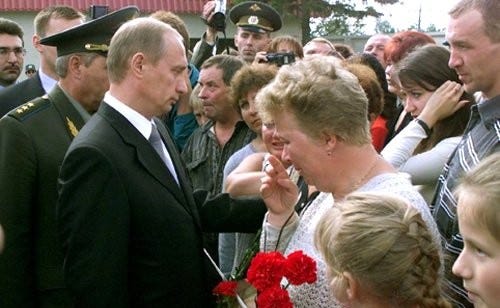
When the Kursk sank, the Second Chechen War — officially called an “anti-terrorist operation,” not a war — had been underway for a year already. By February 2000, Russian troops had managed, through fierce fighting, to enter the Chechen capital of Grozny and set up roadblocks and military police offices. A few weeks before his first presidential election, Putin announced the end of the operation’s active phase. Formally, however, the Second Chechen War did not end until 2009. Devastating acts by terrorists — including attacks against a school in Beslan and a theater hall in Moscow — still lay ahead. In 2007, Amnesty International estimated that 25,000 civilians perished in the conflict. Another 5,000 went missing.
With the Kursk sunk and the Chechen War no longer “active,” a new chapter in the history of the Russian military begins. The state now spares no expense in maintaining the armed forces and building new weapons. Thanks to rising oil prices, Putin has more and more cash to hand out, every year.
The military attacks the budget
When running its numbers on military expenditures, the Stockholm International Peace Research Institute (SIPRI) considers both direct and indirect costs, looking at budget allocations as well as pensions, benefits for active personnel, and so on. Researchers at SIPRI calculate that Russia’s military spending grew more than seven times between 2000 and 2021: rising from $9.23 billion to $65.9 billion. Meanwhile, says SIPRI, Russia’s number of military personnel held steady at roughly 1.4 million people.
In 21 years under Putin, Russia has spent more than $1.1 trillion on the military.
At the start of the Putin era, Russia ranked 21st globally in military spending. By late 2021, it had catapulted to fifth place. There is no member of the European Union that spends as much money on its military. The EU’s two largest economies — Germany and France — operate smaller militaries that have grown far slower over the past two decades. Germany's military budget in 2021 was $56 billion (up from $26.5 billion in 2000), while French spending on the armed forces rose similarly from $28.4 billion to $56.6 billion.
In absolute terms, the only countries that outspend Russia on the armed forces are the United States, China, India, and the UK. Last year, Ukraine spent ten times less money on its military: just $5.9 billion.
The line item for “national defense” is one of the largest in Russia's federal budget (which Putin signs every year as president). Put simply, the federal budget is money that the Kremlin manages directly. Approximately two-thirds of all defense spending is classified, and the Russian public does not know how exactly these colossal funds are spent. But we do know the main recipient of federal funding for the development of new weaponry: the Rostec State Corporation, which comprises more than 800 industrial enterprises and design bureaus. Putin created Rostec in 2007, and it’s been managed ever since by Sergei Chemezov, the president’s old KGB colleague.
Faridaily estimates that the share of cash outlays for Russia’s army among all federal budget expenditures ranged from 12.3% to 23% between 2006 and 2021. If you include the line item for “National Security and Law Enforcement,” the share increases to between 22.7% and 34.6%. The only priorities that get more funding are pensions and social benefits. The Kremlin spends far less money on education and healthcare, and this gap is only widening.
Looking at Russia’s federal budget execution statistics, “National Defense” is the only major item that never decreased in nominal terms from 2000 to 2016. Yet, spending on education, health care, infrastructure, and even social benefits has slowed at different times. Almost every year since 2009, after the war with Georgia, Russia’s military spending has risen faster than the budget for education and healthcare. Between 2014 and 2016 (the years immediately following the annexation of Crimea), the disparity became monumental.
Nominal spending under the national defense line item declined by roughly a trillion rubles in 2017, falling to 2.85 trillion rubles from 3.8 trillion rubles a year earlier, but this reduction did not affect rearmament spending, according to Putin himself. The drop in spending that year is most likely due to cuts to a benefits program for defense contractors (the budget for which was allocated to possible future costs, not direct expenses).
By 2022, Russia’s annual military spending had rebounded in nominal terms to its level in 2016: about 3.6 trillion roubles.
The army under Putin's protection
What Russia spends next year on its army and intelligence community is up to Vladimir Putin personally. “All the main parameters [of defense spending] and controversial decisions are always made at the presidential level. This happens in a series of defense meetings between August and September, each year. The finance minister and top security officials fly to Sochi [to meet at the presidential residence] and draw up the budget,” said a former government official.
According to another ex-official in the federal government, defense expenditures have always been a “protected” budget item, but no one openly acknowledges it. In other words, these allocations are immune to cutback requests, even when the budget drops for healthcare and education. “Another thing is that the military always wants even more than the government allocates, so there are fierce fights, each year, between the Finance and Defense ministries over every ruble,” says the former official, explaining that leaks to journalists about the Finance Ministry or the federal government wanting to cut military spending refer to additional funding requested by the armed forces, not the money already earmarked.
“The concept of a ‘protected item’ does not exist in [Russia’s] budget law, but we honestly didn’t touch the Defense Ministry when optimizing to find resources for priority spending areas (like fighting COVID),” said another former senior government official. “Of course, there are always disputes and compromises when approving the budget, but settled allocations are never cut,” he adds.
The increases in military spending might have been even greater were it not for Alexei Kudrin, Putin's closest associate and Russia's finance minister from 2000 to 2011. In 2010, following the war with Georgia, then-President Dmitry Medvedev approved a new program to rearm the Russian military within a decade. Kudrin objected to the massive budget: 20 trillion rubles. A year later, Medvedev raised benefits for military personnel, again exceeding the Finance Ministry’s recommendations.
In journalist Yevgeniya Pismennaya's book, Kudrin says he wanted then to resign, but Putin (still prime minister but preparing to return soon to the Kremlin as president) persuaded his old comrade to remain at his government post.
A few months later, however, Kudrin got his resignation wish when the famous “reshuffle” took place: Medvedev nominated Putin to take back the presidency, and Putin promised to make Medvedev the head of the government. Kudrin, who was in the United States at the time, told reporters in an interview the next day that he had no intention of working in Medvedev’s cabinet, citing his disagreements with Russia’s future prime minister. “They primarily concern substantial military spending,” Kudrin stressed at the time, while oddly contrasting Medvedev with Putin and emphasising his loyalty to the latter.
A few days later, with television cameras rolling, an enraged Medvedev gave the finance minister a public dressing-down and demanded his resignation.
Kudrin's departure was one of the rare occasions in the Putin system when the resignation of such a high-ranking official — and Kudrin was both deputy prime minister and finance minister — was due to disagreements with the leadership. Budget policy priorities proved to be such a sore subject that Kudrin wrote an article in the newspaper Kommersant shortly after his resignation where he again criticized rising military spending.
Stewardship of the Finance Ministry passed to Anton Siluanov, who had overseen defense spending as Kudrin’s deputy, making him well-known to the military and intelligence community.
A source familiar with Siluanov says he was always more considerate of the military’s funding requests than his predecessor (who saw the armed forces as “just little green men”). “Siluanov believed that the army should be powerful, modern, and combat-ready,” another source who worked closely with him for some time told Faridaily.
Siluanov’s own public statements corroborate this characterization. For example, in a 2018 interview with the TV station Dozhd, he said he would like to have more federal funds available for development projects, but he stressed that high levels of defense spending are justified: “If you look at how [foreign] military facilities, military bases, and complexes have encircled us around our border, [Putin’s March 2018 address to the Federal Assembly] is not a show of force — it is a response.” At the same time, Faridaily’s source clarified, the military’s many special benefits and its exemption from cutbacks to pension payments annoyed Siluanov and Kudrin alike.
Putin takes up arms
February 2014. Russia has just completed the Winter Olympics in Sochi — a grand tournament meant to showcase the economic strength of Putin's Russia. (The sports infrastructure and many of the roads needed to stage the event were built specifically for the Games.) But the Russian president's thoughts are not on Sochi or the Olympics; his attention is turned to Ukraine, where supporters of European integration are assembled in the streets and demanding the resignation of President Viktor Yanukovych, who at Moscow's request has refused to sign an association agreement with the EU. Even a $3-billion emergency loan from Russia doesn’t help the Ukrainian authorities, and soon Yanukovych flees the country.
Having suffered a political defeat in Ukraine, Putin sends an army to Crimea. With identifying insignia removed from their uniforms, Russian soldiers occupy Crimea’s strategic facilities. A month later, Putin signs a treaty annexing the peninsula. Around the same time, the Russian government begins organizing and financially supporting separatists in eastern Ukraine. A year later, Putin launches another military operation, this time in Syria, where the Russian military helps dictator Bashar al-Assad remain in power.
The events of 2014 were a watershed moment in Russian defense spending. In the years since, according to calculations by the Stockholm International Peace Research Institute, the government’s “militancy” (defense spending as a percentage of GDP) has skyrocketed and Russia is now one of the biggest defense spenders (relatively speaking) among all G20 nations.
According to SIPRI, Russian military spending reached 4.26% of GDP in 2020 — more than the U.S., China, the UK, and any of the European Union countries. In 2021, thanks to post-pandemic global economic growth, these numbers dropped slightly (see infographic), but Russia retained second place among G20 countries behind Saudi Arabia, which spends a great deal on the military as a percentage of GDP, like other Gulf countries.
The statistics reflecting federal budget execution suggest that the 2014–2016 period was the peak of Russia's rearmament program (the same ten-year, 20-trillion-ruble rearmament program that Alexei Kudrin criticized).
The program itself is classified, but the military has not concealed the general parameters, and it is easy to find information about these expenditures because rearmament is one of state propaganda's favorite topics. For example, Deputy Defense Minister Alexei Krivoruchko revealed in a 2020 article for the magazine Radioelectronic Technologies that the share of modern weapons in the Russian army had quadrupled since 2013 to almost 68%. In fact, the 2020 state armaments program became the first in Russian history to be implemented without delays or disruption.
In late 2017, Putin approved a new version of the program, allocating 21.7 trillion rubles to Russia’s rearmament over the following decade. According to Kommersant, the funds are divided roughly equally among all branches of the military, albeit prioritizing nuclear-deterrence systems, high-precision weapons, hypersonic weapons, and the development of general-purpose forces.
As usual, however, the military wants even more, and the Defense Ministry is already designing a new program that would cost 30 trillion rubles between 2024 and 2033.
Russia's global leadership in military spending demonstrates Vladimir Putin's prime concern. According to official statistics, some 16 million people in Russia live below the poverty line. The average monthly income in Russia is far lower than in any EU country. Average life expectancy in Russia is just 70 years, while it’s 79 years in the United States and 80 in the European Union.
Russia sustains its bloated military budget while underfunding education, healthcare, and infrastructure. For example, annual spending on education in Russia is 4% of GDP, compared with 7% in Sweden, which leads the world here (according to a study by the Higher School of Economics). Most education spending in Russia, moreover, is funded by regional officials, not the federal government.
With healthcare, the situation is even more pathetic. EU countries like France, Germany, and Sweden spend roughly 10% of their GDPs on healthcare. Russia allocates just 3.5% of its GDP.
"It is an undeniable fact that military spending is growing faster than non-military spending in Russia under Putin. This has been especially noticeable in the last decade," notes Sergei Guriev, provost of the Paris-based Institute of Political Studies (Sciences Po). Guriev says the Kremlin's priorities can be seen not only in the dynamics of budget expenditures but also in various executive decisions: “For example, the Higher School of Economics and the Russian Academy of National Economy and Public Administration prepared a development strategy in 2011, proposing a budget that would run until 2020 premised on the following main idea: spend less on the intelligence community and the army and more on education and public health. And how did all that end? They decorated the proposal’s authors, but it was not implemented.” Guriev points out that the government even started chipping away at Russia’s pension system after the annexation of Crimea in 2014, freezing voluntary pension savings that year, declining to index pension payments in 2016, and actually raising Russia’s retirement ages in 2018.
“Putin consciously chose to increase the military’s budget at the expense of allocating money to human capital development,” explains Guriev.
Do Russians support Putin's priorities? Pre-war polls show that they do not. In 2018 and 2020, the HSE polled 6,000 respondents in 173 localities across 59 regions of Russia. The statistical margin of error of such a sample is ±1.9%. Both before and after the coronavirus pandemic, Russians said they believe healthcare and education should be the government’s most important funding concerns. In 2020, the share of respondents who said the state should spend more on defense than hospitals and doctors’ salaries was eight times smaller (8% versus 65%). Earlier polling by the Levada Center reflects a similar picture.
Besides the sociologists conducting these studies, however, no one asks Russian citizens how they want their tax money to be spent. The Kremlin goes its own way.
Discrediting the armed forces
Peacetime casualties in Russia are a state secret. The last time the Defense Ministry disclosed these numbers was in March 2022, when officials claimed that 1,351 servicemen had been killed in Ukraine. The authorities in Kyiv tell a different story. On August 18, the Ukrainian General Staff asserted that Russia had lost roughly 44,000 combatants since the start of the full-scale invasion. British intelligence puts this number at 20,000, while the CIA reportedly believes that at least 15,000 Russian servicemen have died fighting in Ukraine, so far. Journalists from the BBC Russian Service and Mediazona have verified the deaths of at least 5,701 Russian soldiers.
Despite years of monumental investments, the Russian army appears to be bogged down, with the Ukrainian military’s drones now flying loops over Russians’ heads. When the Kremlin launched its “special military operation” in late February, this is hardly the scenario the Putin administration expected.
Since February 24, numerous media outlets and think tanks have studied the Russian military’s performance in the invasion. This expertise suggests where Putin, the Russian military, and Russia’s intelligence community got it so wrong.
First, the Kremlin underestimated Ukrainians’ patriotism. According to The Washington Post, the Russian Federal Security Service (FSB) had polls showing that only 48% of the population said they were prepared to defend their homeland in case of Russian aggression. As a result, the FSB believed that the majority of Ukrainians were not ready to fight, which meant Kyiv could be captured in a matter of days. American officials told The Washington Post that Russia’s intelligence community reported exactly these projections to President Putin before the start of the military operation.
Second, after Russia’s blitz attack failed, time soon favored Kyiv, as weapons from allies started pouring in and the Ukrainian army grew rapidly from an estimated 150,000–200,000 soldiers to roughly 700,000 by May, according to President Volodymyr Zelensky. This is potentially three times more soldiers than the reported number of men fighting for Moscow (including the separatist militias from Donetsk).
Third, the Kremlin overestimated the strength of its army and the quality of its equipment. Even state-affiliated experts like Vasily Kashin at the Higher School of Economics and Ruslan Pukhov, a member of the Defense Ministry’s Public Council, admit that Russia’s army lacks drones, technical reconnaissance equipment, modern surveillance equipment (especially thermal imagers), and the latest generation of armored vehicles. Russia also invaded Ukraine with far too few ground forces. In recent years, the Kremlin has invested in developing Russia's airborne troops, but their skills are in little demand now.
Analysts at the Swedish Defense Research Institute (FOI) warned back in 2019 that the Kremlin was preparing for a regional war. Three months after it started, the institute released a report admitting that it had overestimated Russia's military power. For example, the size of the force mobilized for Ukraine broadly matched what FOI’s experts expected, but Russia’s military sorely lacked coordination and cohesion, and the equipment and military personnel actually involved in combat was much less than experts had predicted.
Among the reasons for their mistakes, FOI experts cite an excessive reliance on quantitative information from official Russian sources. Focusing on the same figures that Russia’s Defense Ministry touted, the analysts neglected aspects like logistics, strategic mobility, and troop control and management. They paid little attention to the intangible factors that proved decisive: operational planning, officer training, the ability to lead small units, equipment maintenance, morale, soldiers’ training, internal coordination, and so on. These are the indicators that are the hardest to analyze remotely; they’re also the root of the Russian military’s failures in Ukraine, experts now conclude.
“What were they doing all the time they were standing at Ukraine's borders in 2021? Why didn't they learn anything at least from these exercises?” commented retired General David Petraeus (the former head of the CIA and U.S. Central Command). “This is not a professional army. It looks like a bunch of undisciplined rabble,” added retired U.S. Admiral James Foggo, who conducted NATO exercise Trident Juncture in late 2018 (the largest of its kind in Norway since the 1980s).
Pavel Filatiev, a paratrooper who took part in the first days of Russia's offensive in Ukraine, has also written about the mess inside the Russian army, alleging that equipment was outdated, apathy prevailed among contract soldiers, and military commanders on the ground did not know the invasion plan.
Journalists at The Economist point out that a long-standing Russian problem — corruption — has reduced the effectiveness of spending on the military. Graft helps explain the cheap Chinese tires on trucks, the use of ordinary mobile phones and Chinese home radios on the battlefield, the soles falling out of soldiers’ boots, stale rations, and more.
Symbolically, the Defense Ministry’s fight against corruption launched Putin’s career as an official in the Yeltsin administration in 1997. Putin then told journalist Elena Tregubova, “The corrupt generalship itself is not capable of fighting corruption. Therefore, it is clear that the Defense Ministry itself cannot be reformed,” Putin says in Tregubova’s book, “Tales of a Kremlin Digger,” where she highlights how Russia’s future president (when he still lacked significant political leverage) boasted that his department had received a mandate from Yeltsin to weed out corruption in the military. “Even then it was clear, in a strange whim, that nature had endowed this ambitious man with an equal measure of love for all kinds of militant special effects and an inability to put them constructively into practice,” Tregubova wrote.
In Russia, says economist Sergei Guriev, there is almost no control over the Defense Ministry’s spending: “Alexei Navalny and the Anti-Corruption Foundation reported specific instances of theft from the military’s budget, but the authorities ignored it.”
The war in Ukraine is the first major classic war of the 21st century. State-affiliated military expert Vasily Kashin argues that a truce between Moscow and Kyiv is impossible before late 2022 or early 2023. Any agreement reached, however, will not solve the conflict’s underlying political problems, ensuring a long period of cold war between Russia, Ukraine, and NATO countries.
This war will be costly for all sides, but it is inevitable and irreversible.
“It is important to understand that the military industrial complex cannot be Russia’s engine of economic growth or driver of technology like it was for the USSR,” explains Guriev. The world has changed, he says. Modern armed forces use civilian technologies — not vice versa. The drivers of innovation are global corporations that can afford investments in scientific and technological developments that exceed the defense budgets of most countries.

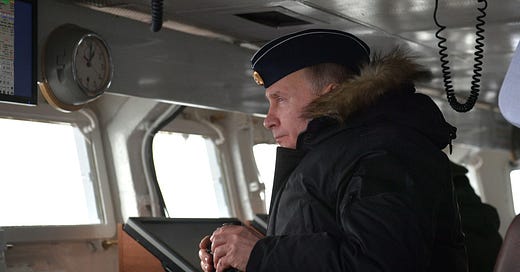




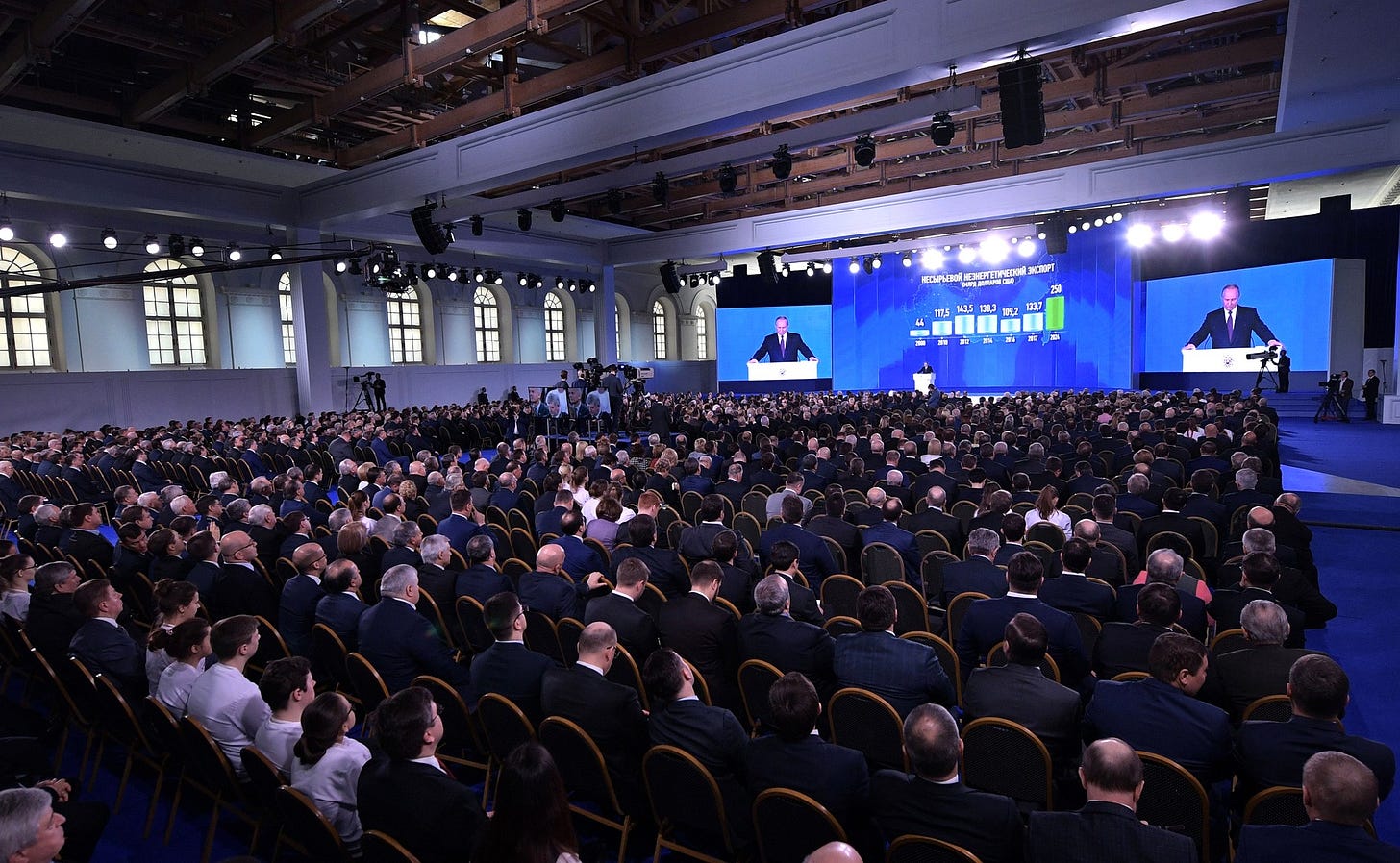




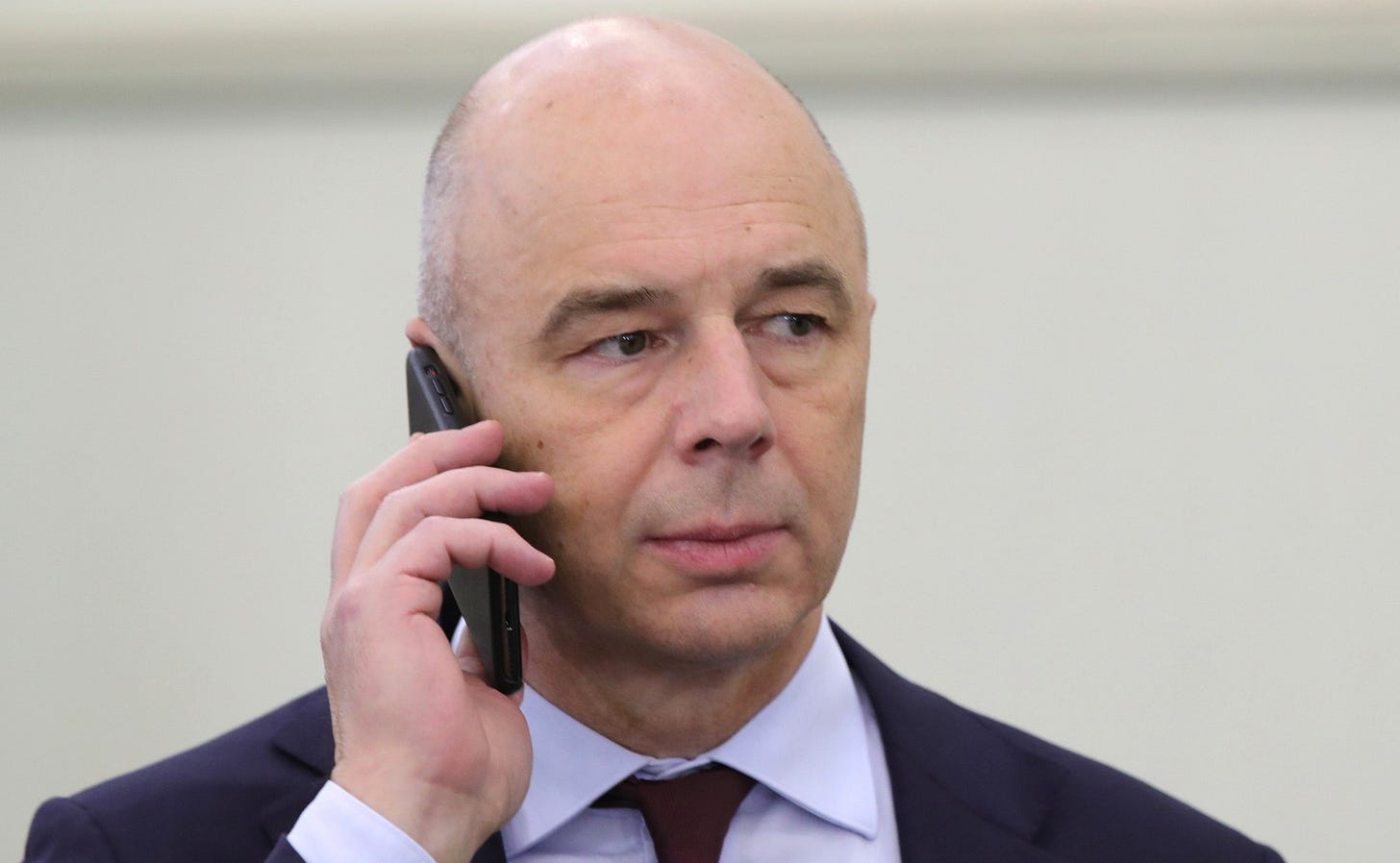
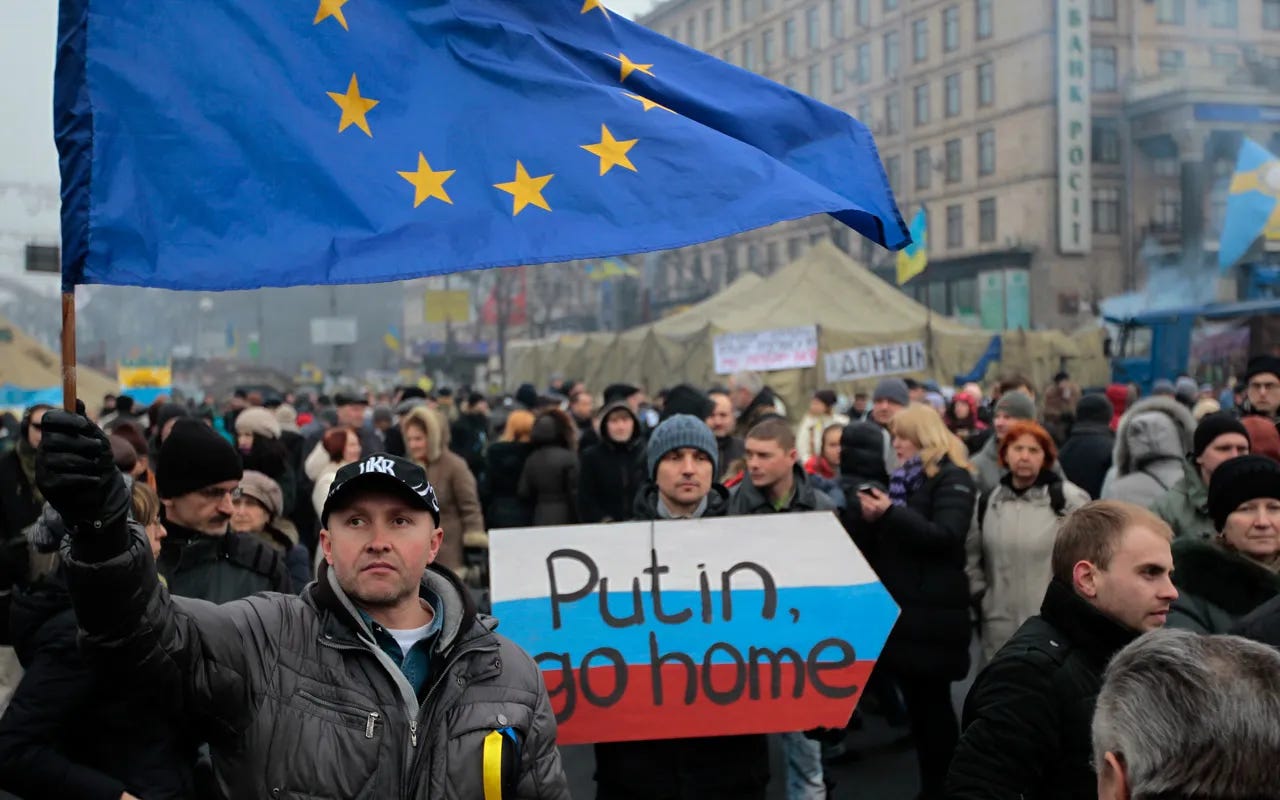



Great reporting. Thank you.
Great article. Balanced, reasoned and researched, unlike some of the ludicrous Kremlin fan-boy comments below.